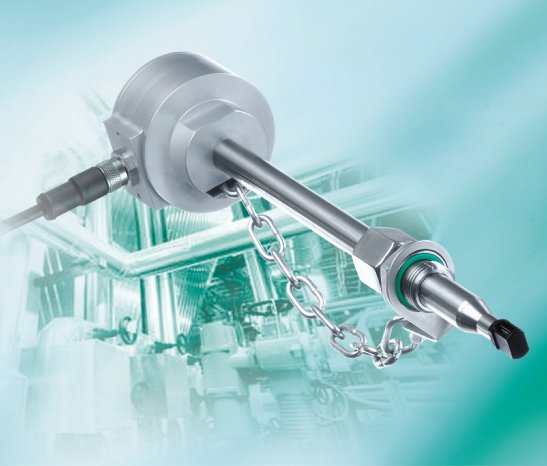The requirements for adequate flow measuring technology range from detecting very small volumes of air or gas, to high flow velocities over wide temperature and pressure ranges. In addition, the sensors are subjected to special requirements in terms of compatibility with a host of different media, dusty and/or aggressive gases, combustible media or use in explosive areas.
Predestined technology
Thermal anemometry is the ideal base technology for volume and flow measurement and is the principle on which the SCHMIDT® flow sensors operate. This measuring principle combines two main advantages: one is, that the measurements are independent of the prevailing pressure and temperature conditions as the sensor detects the mass flow directly. Compensation for these two parameters is therefore not necessary. The other is, that no mechanical components are required. This results in a long service life and the sensors are resistant to shock or vibration. In addition, the measuring principle avoids any drift of the sensor during operation.
Depending on the model used, such flow sensors are already capable of measuring flow velocities precisely from 0.06 m/s with a measuring accuracy of ±1%, for example, with an SS 20.500 dumbbell head sensor. Also in the 1% class are the SS 20.600 chamber head sensors, which can measure flow velocities up to 220 m/s. The latter also offer resistance to overpressure up to 16 or 40 bar and an extended temperature range up to +120°C. The SS 20.650 model can even be used in temperature ranges up to 350°C due to the high temperature-resistant ceramic used for its special connecting and sensor elements.
Besides their use in air, SCHMIDT® flow sensors are available for use in a variety of gases or gas mixtures, i.e. for pure oxygen, CO2, methane, etc. There are also variants for hydrogen. A sensor head made of stainless steel as well as glass fiber reinforced PBT (polybutylene terephthalate), as in the SS 20.500, is also resistant to aggressive media such as hydrochloric acid, acetone or sulphuric acid. The ATEX certified variants of the SCHMIDT® flow sensors meet the special requirements in explosive environments.
At a glance:
SCHMIDT® flow sensors meet the highest requirements for measuring precision, temperatures and compatibilities with media. Due to their operating principle, they allow direct detection of standard velocities and standard volume flows without requiring additional measurement of pressure and temperature. Their high measuring precision and reproducibility is documented with ISO calibration certificates. Depending on the variant, they can also be used in dusty or aggressive gases, with extreme media temperatures and at high overpressure.



